News
UPDATE: Lick Creek, Durham
Posted on August 10th, 2023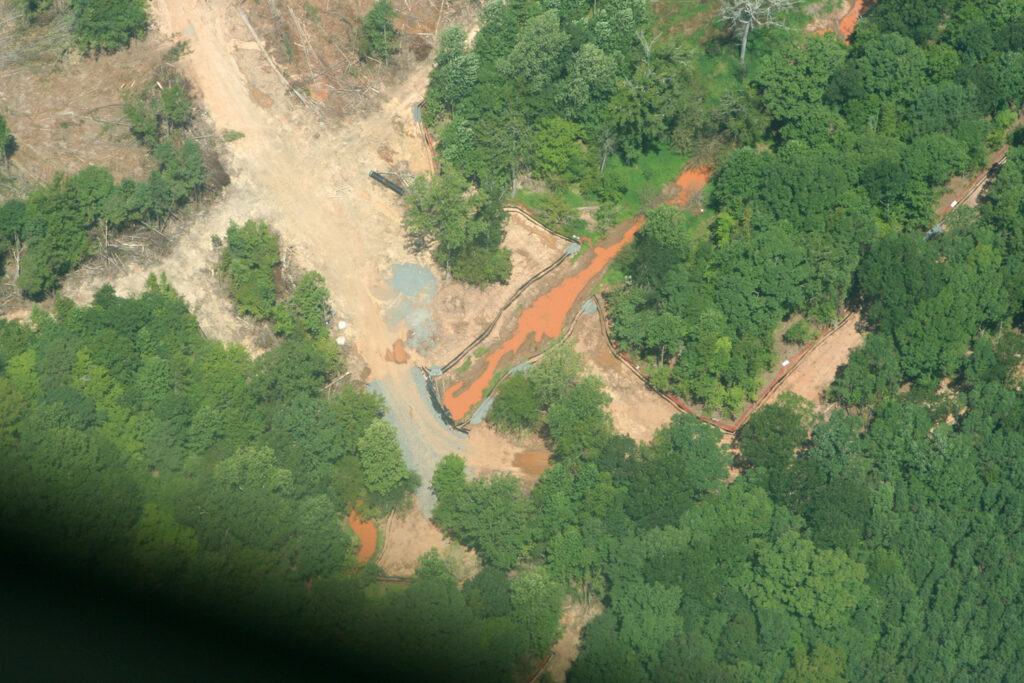
Though black sediment fencing is designed to prevent soils from running off into Lick Creek, it is apparently not working, as shown by the creek's bright orange color.
The public has one last chance to weigh in on development in Durham at a special joint city-county public hearing on Aug. 31.
“It’s a hearing to discuss the new city-county comprehensive plan, as well as the new urban growth boundary, which is really the action point: where is growth going to happen, when and how,” said Sound Rivers’ Neuse Riverkeeper Samantha Krop.
For more than a year, Sam has been working with Durham residents concerned about the rampant development happening in previously rural areas and how that is impacting the environment — specifically the Lick Creek watershed. Clear-cutting of forest to make way for more than a dozen separate housing developments currently under construction has led to erosion and sedimentation of the waterways, evidenced by the creek and its tributaries running “tomato-soup red” when it rains. Lick Creek is a tributary of Falls Lake, a source of drinking water for thousands of Durham residents.
The pace of development and its impacts led the Durham City-County Planning Commission this week to unanimously vote down a proposal for yet another development in the Lick Creek watershed, and recent outings by Sam (by air) and Program Director Clay Barber (by boat) prove that Lick Creek erosion and sedimentation is only getting worse (see photos below).
“In the Aug. 31 hearing, city and county officials will be meeting, and development in this particular part of the watershed that is being most heavily developed will be discussed. That is moment worth promoting,” Sam said.
The joint public hearing will be held Thursday, Aug. 31, at 7 p.m. The hearing will be held in the Durham City Council Chambers located at 101 City Hall Plaza, Durham NC 27701. An agenda and information on how to join the meeting virtually via Zoom will be posted here prior to the meeting.
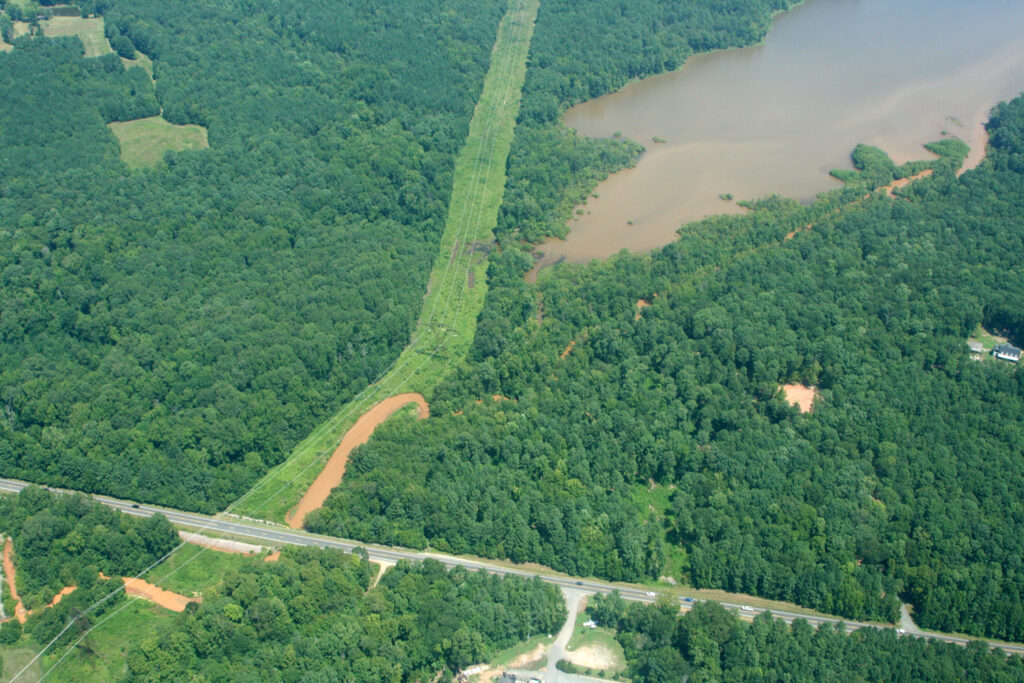
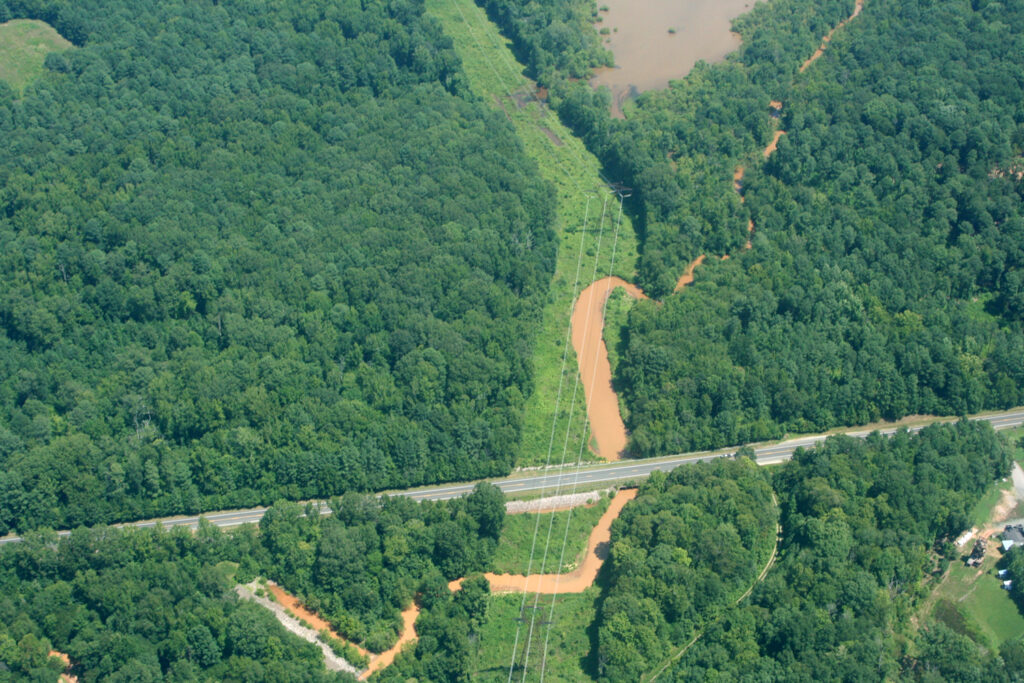
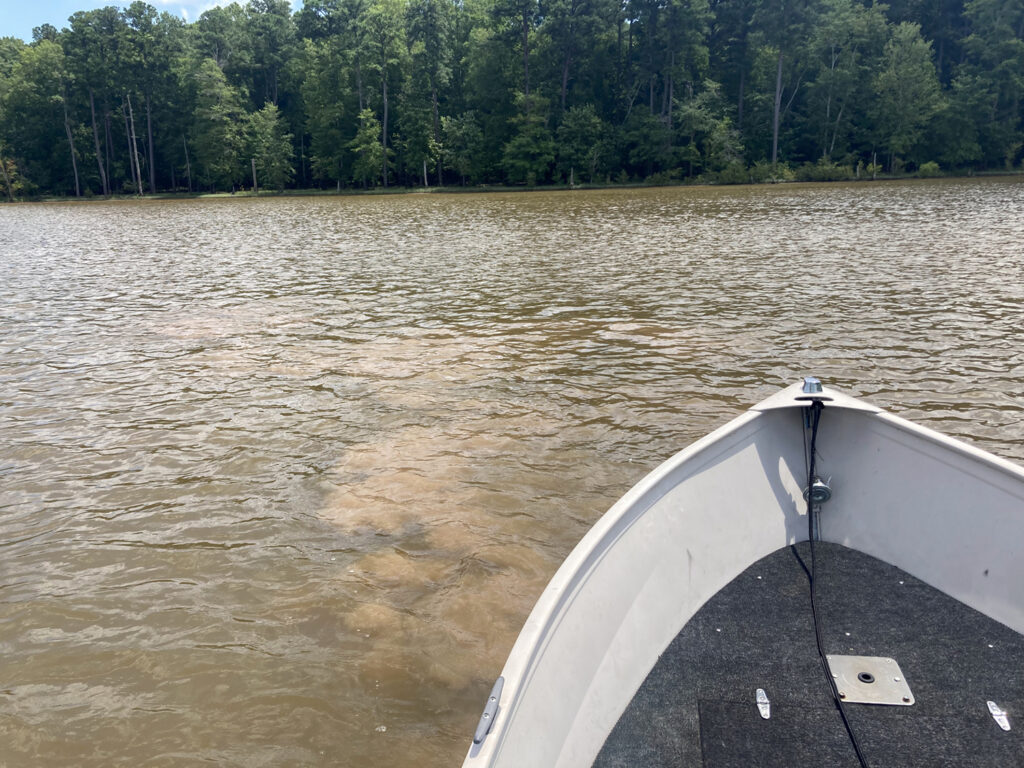
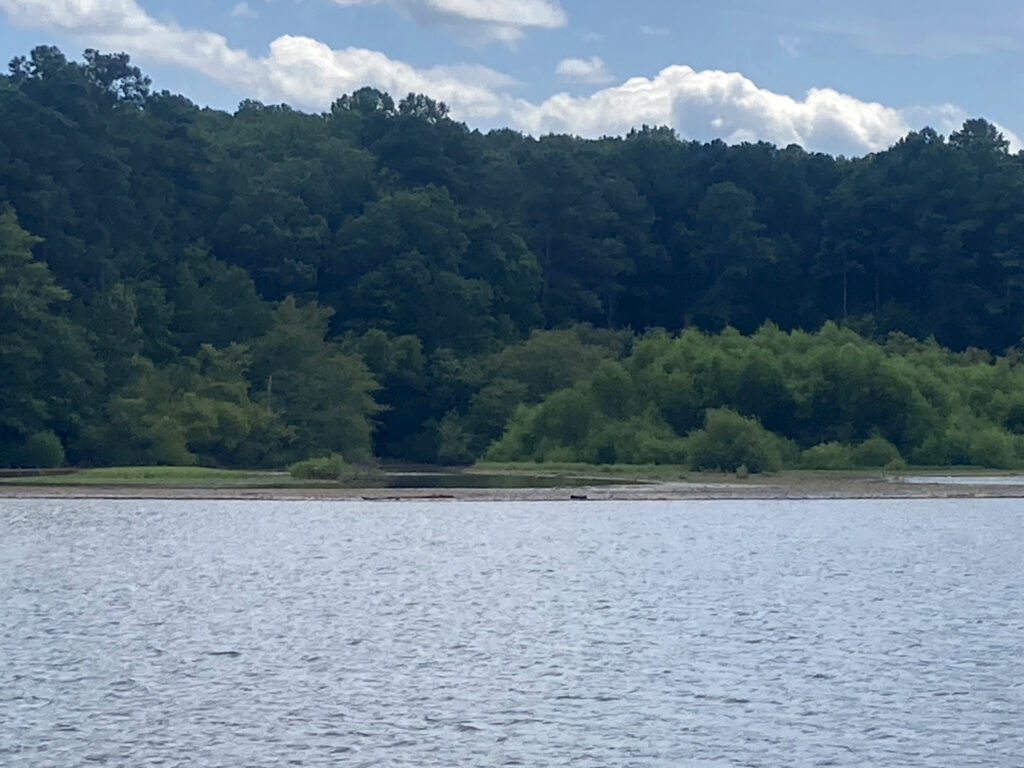
Related News
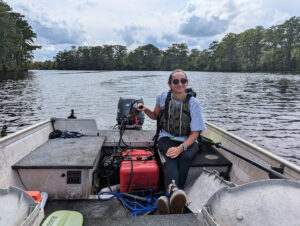
Riverkeeper monitoring Tar-Pamlico Water Trail
July 25th 2024

Rain ramps up trash-trap cleanouts
July 25th 2024

Riverkeeper, intern take on emergency trash trap cleanout
July 25th 2024

Tar-Pam Riverkeeper investigates Cub Creek turbidity
July 25th 2024

Heavy rains lead to sky-high turbidity on Lick Creek
July 25th 2024
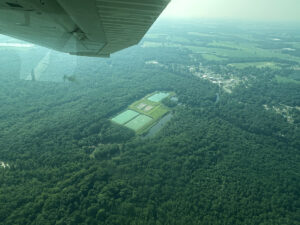
Riverkeeper: What goes up, must come down
July 18th 2024
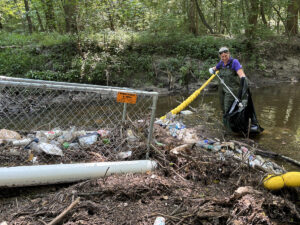
Greenville’s trash trap gets emergency cleanout
July 18th 2024

Sound Rivers gets close up of cyanobacteria
July 18th 2024

